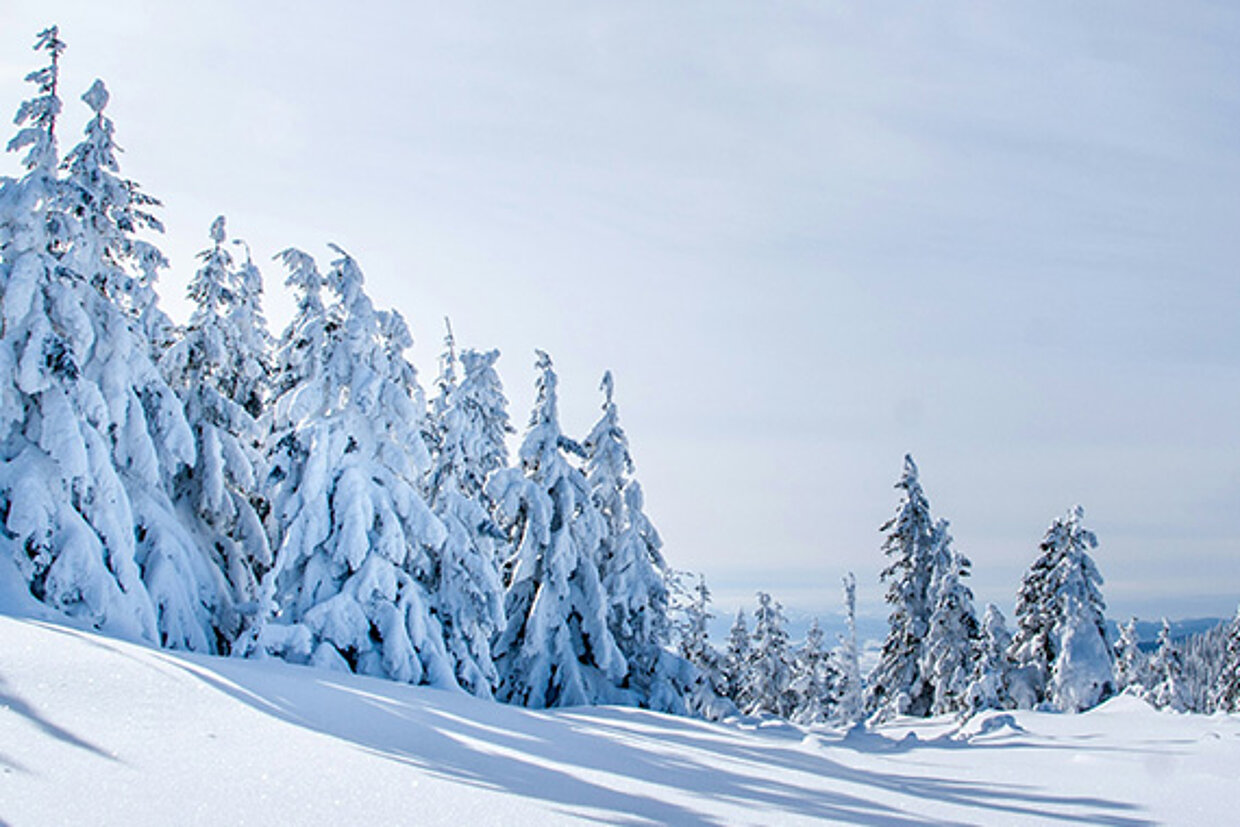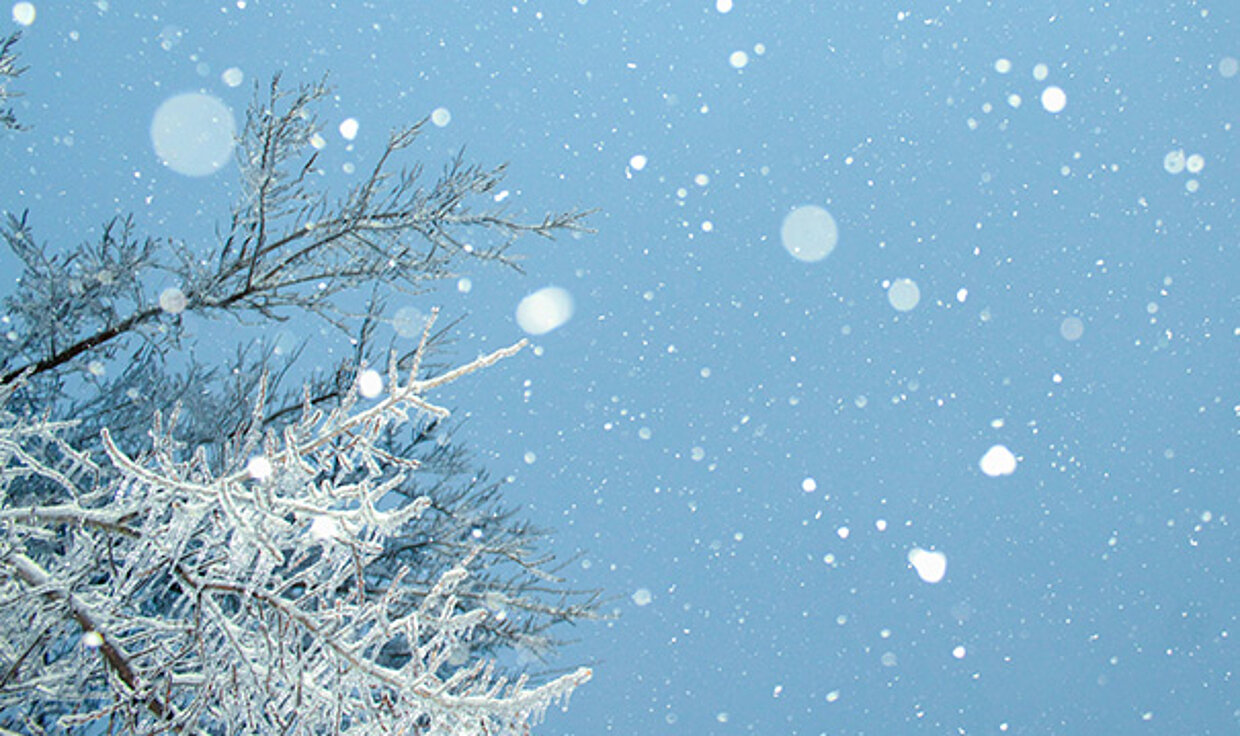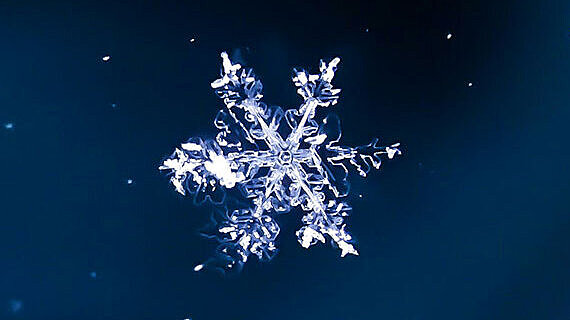Snow Crystals – Frozen Geometry
How does Snow form?
From Vapor to Crystal
Snow doesn’t form from liquid water – it forms directly from water vapor, through a process called deposition. In this phase transition, oversaturated water vapor attaches itself to a condensation nucleus, such as a dust particle or pollen grain, and freezes instantly.
The growing ice crystal then expands along the energetically preferred axes of the water molecules – following a characteristic sixfold symmetry.

Did You Know? Fascinating Facts about Snow Crystals
• As unique as a fingerprint: No two snowflakes are alike – even under identical conditions, subtle differences always occur.
• Molecular art: The hexagonal shape of snowflakes reflects the hydrogen bonding between water molecules.
• Snow is frozen vapor: Unlike rain, snow does not stem from liquid water but from water vapor – through deposition.
• Nakaya Ukichirō: The Japanese physicist created the first artificial snow crystal in 1936 and developed a classification system still in use today.

Why are Snowflakes hexagonal?
The six-armed symmetry of snowflakes is no coincidence – it’s the result of water’s molecular structure. In solid form, H2O molecules arrange themselves via hydrogen bonds into a hexagonal lattice. This so-called "Ice Ih" structure – the “h” stands for hexagonal – is a fundamental physical property of ice in Earth’s biosphere, visible on both microscopic and macroscopic levels.
Still, no two snowflakes are identical. Their exact shape and pattern depend heavily on the specific conditions inside the cloud in which they form.
Temperature and Humidity shape the Crystal
Even slight changes in temperature and humidity during formation lead to dramatically different snow crystal shapes. Japanese physicist Ukichirō Nakaya (1900–1960) was the first to artificially grow snow crystals and classify them in a diagram that is still used today.
| Temperature | High Humidity | Low Humidity |
|---|---|---|
| -2 °C | Thin plates | Compact prisms |
| -5 to -10 °C | Long needles | Simple prisms |
| -12 to -16 °C | Branching stars (dendrites) | Small, simple plates |
| below -30 °C | Hollow spikes, skeletal forms | Tiny hexagonal crystals |
Conclusion: Nature meets Physics – and creates Beauty
What falls from the winter sky as graceful, swirling flakes is, in fact, the finely tuned result of atmospheric physics. Temperature, humidity, molecular structure – all come together to form crystals of astonishing precision. Each snowflake is a small and fleeting masterpiece of nature.






